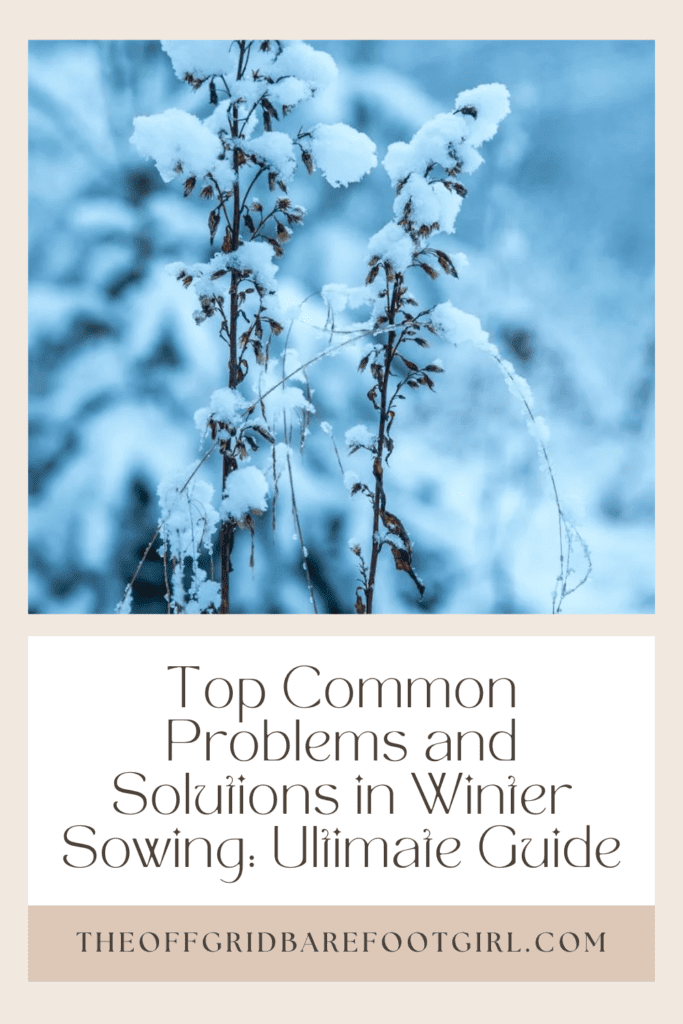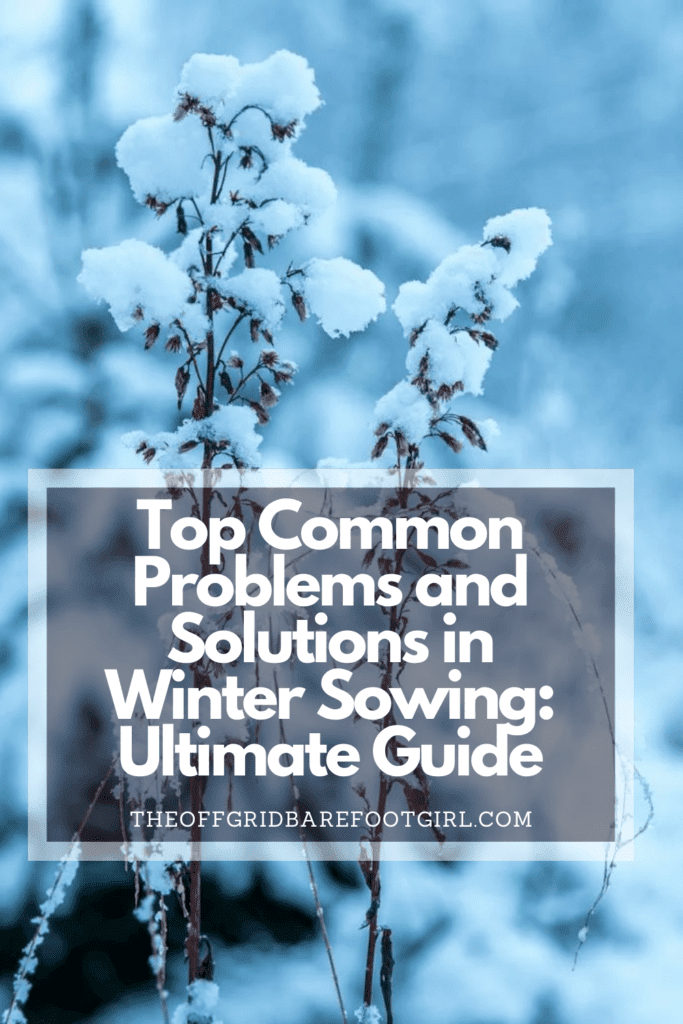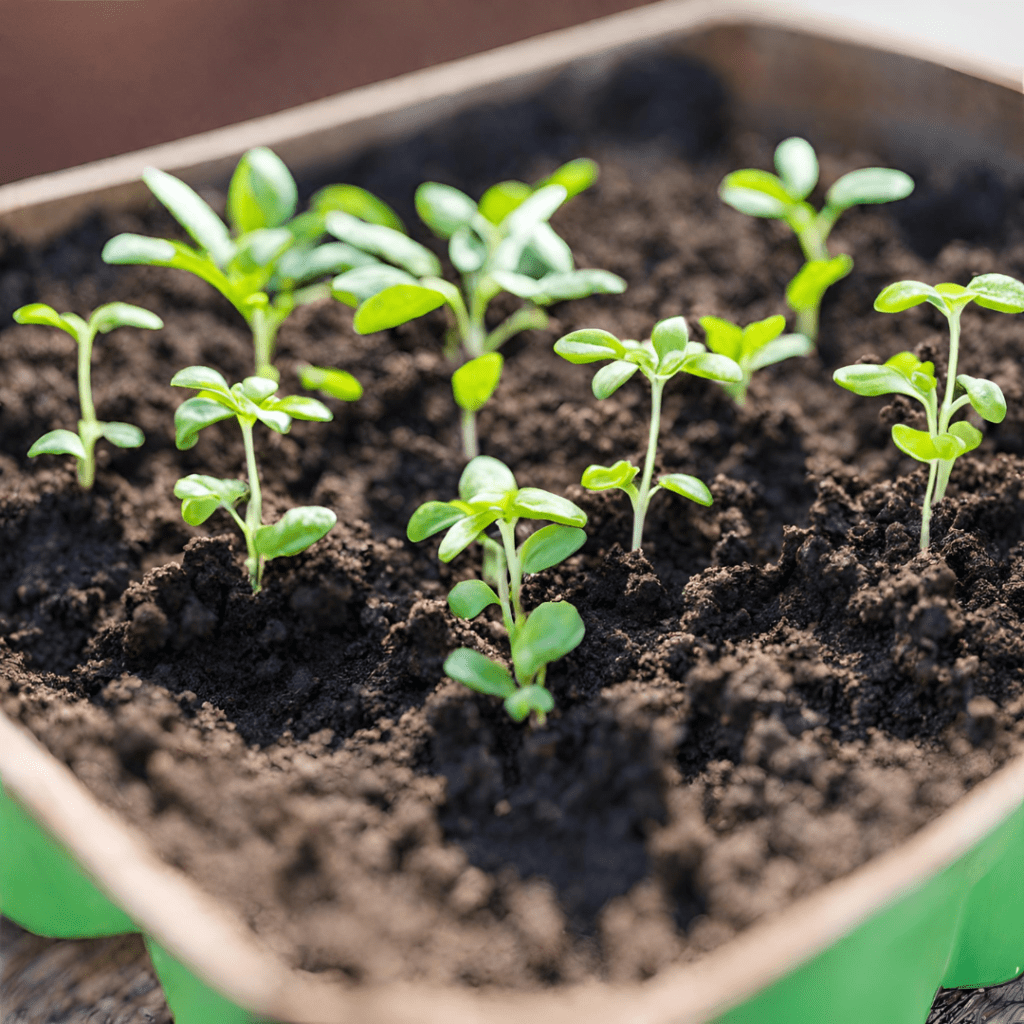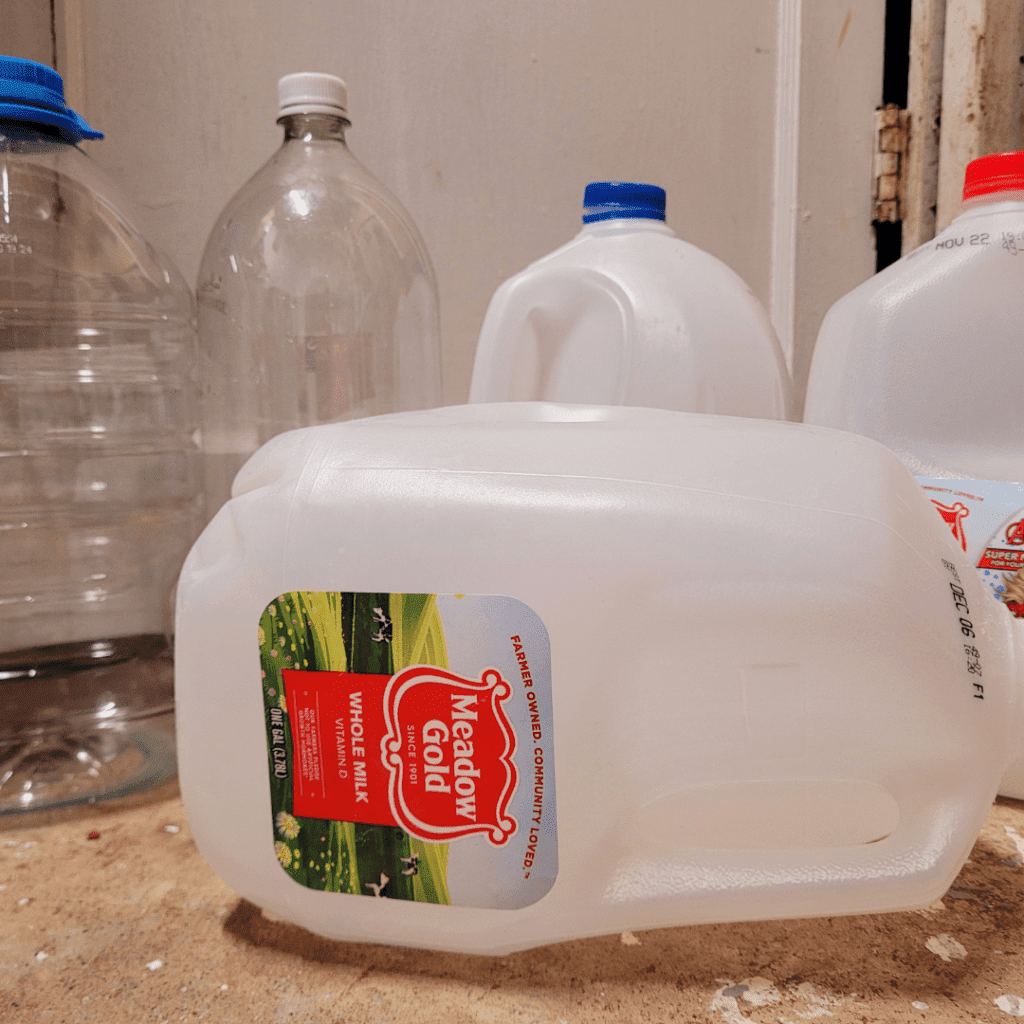Discover the top common problems and solutions in winter sowing with this ultimate guide. Learn how to prevent seed rot, mold, pests, and other challenges while growing strong, resilient seedlings in cold-weather containers. Get practical tips to troubleshoot issues and ensure a successful winter sowing season for a thriving spring garden.
In the world of gardening, winter sowing has gained popularity as an efficient and cost-effective method for starting plants outdoors during the cold season. While winter sowing offers numerous benefits, such as natural stratification and hardier seedlings, it also presents certain challenges that gardeners need to address.
This ultimate guide aims to explore the common problems faced in winter sowing and provide effective solutions to ensure successful plant growth. From lack of insulation to moisture retention issues and pest control, I will delve into each problem and offer practical strategies to overcome them. By understanding and implementing these solutions, you can enjoy a bountiful garden come springtime.
This is a pinnable post. Tap or hover over any image in this post to pin to your Pinterest Boards.

Introduction: The Benefits and Challenges of Winter Sowing
Winter sowing is a fantastic way to get a head start on your garden while embracing the chilly season. It involves sowing seeds outdoors during winter, allowing nature to take its course and provide the perfect conditions for germination when spring rolls around. While it may sound like a gardening enthusiast’s dream come true, there are a few common problems that can arise during winter sowing. Fear not, my green-thumbed friends, for in this ultimate guide, I shall explore these problems and solutions in winter sowing to ensure your winter sowing journey is a roaring success.
Problem 1: Lack of Proper Insulation
When it comes to winter sowing, insulation is key. Without proper insulation, your seeds may freeze or succumb to harsh weather conditions. To tackle this problem, consider the following steps:
Choosing the Right Containers: Problems and Solutions in Winter Sowing
Select containers that offer adequate insulation to protect your precious seeds. Avoid flimsy options that won’t withstand the elements. Opt for sturdy containers like milk jugs, plastic bottles, or even old Tupperware. These will provide some much-needed protection against the cold and keep your seeds cozy.
Selecting Insulating Materials: Problems and Solutions in Winter Sowing
In addition to choosing the right containers, you can further insulate them by using materials like bubble wrap, straw, or even old blankets. These will act as a snug blanket for your containers, preventing heat from escaping and keeping the cold at bay. So, raid your storage room and transform those forgotten items into winter-sowing superheroes!
Solution 1: Choosing the Right Containers and Insulating Materials
By carefully selecting sturdy containers and employing insulating materials, you can create a warm and cozy environment for your seeds. Remember, the key is to keep Jack Frost at bay while creating a snug little haven for your future plants to thrive. With the right combination of containers and insulation, you’ll be well on your way to successful winter sowing.
Problem 2: Inadequate Moisture Retention
Keeping your seeds moist during winter can be a bit tricky. The cold temperatures and dry air can lead to inadequate moisture retention, which is essential for germination. However, fear not, for there are solutions to ensure your seeds stay hydrated and happy!
Effective Watering Techniques: Problems and Solutions in Winter Sowing
Watering your winter-sown seeds requires a delicate touch. Instead of drowning them with a torrential downpour, water them gently. A misting bottle or a gentle trickle from a watering can will do the trick. The goal is to provide enough moisture for the seeds to stay hydrated without drenching them and causing any waterlogging issues.
Mulching Strategies: Problems and Solutions in Winter Sowing
Mulching is another effective strategy to retain moisture in your winter sowing setup. Once you’ve sown your seeds, cover the soil with a layer of organic matter such as straw, leaves, or compost. This mulch will act as a protective barrier, preventing water evaporation and keeping the soil consistently moist. Plus, it’s like tucking your seeds in with a cozy blanket – they’ll thank you later!
With these watering techniques and mulching strategies, you can ensure your winter-sown seeds have a fighting chance at germination. Remember, it’s all about finding that delicate balance between providing enough moisture without drowning your plants.
Solution 2: Effective Watering Techniques and Mulching Strategies
Winter sowing comes with its own set of watering challenges. Too much water can lead to root rot, while too little can cause dehydration. So, what’s a gardener to do? Here are some effective watering techniques and mulching strategies to keep your winter-sown plants happy and hydrated.
First and foremost, it’s important to water your plants at the right time. Watering in the early morning allows for adequate absorption before the temperatures drop at night. Avoid watering in the late afternoon or evening, as this can increase the risk of frost damage.
To prevent overwatering, be mindful of the moisture level in the soil. Stick your finger about an inch deep into the soil and if it feels dry, it’s time to water. If it’s moist, hold off on watering for a day or two.
Mulching is another crucial technique to retain moisture in the soil and reduce weed growth. Use organic mulch such as straw, shredded leaves, or compost around your winter-sown plants. This will not only help regulate soil temperature, but also conserve moisture and prevent evaporation.
Remember, finding the right balance is key when it comes to watering in winter. Keep a close eye on your plants and adjust your watering schedule accordingly. With these effective watering techniques and mulching strategies, you’ll be on your way to winter sowing success!
Problem 3: Pests and Diseases
Ah, pests and diseases, the unwelcome guests of any garden party. Unfortunately, winter sowing is not immune to their presence either. But fear not! With a little knowledge and some preventive measures, you can keep those pesky intruders at bay.
Identification of Common Pests and Diseases: Problems and Solutions in Winter Sowing
Knowing your enemy is the first step to victory. Some common pests that may affect your winter-sown plants include aphids, slugs, snails, and caterpillars. These sneaky critters can wreak havoc on your precious seedlings, nibbling away at leaves and causing general mayhem.
As for diseases, fungal infections like powdery mildew and damping-off can be particularly bothersome. They thrive in damp and crowded conditions, which can be common during winter sowing.
Prevention and Control Measures: Problems and Solutions in Winter Sowing
Prevention is always better than a full-scale battle. Encourage beneficial insects like ladybugs and lacewings into your garden, as they are natural predators of many garden pests. Planting companion plants such as marigolds and garlic can also help deter pests with their strong scents.
When it comes to diseases, proper plant spacing and good airflow are essential. Avoid overcrowding your seedlings, as this can create a breeding ground for fungal infections. Additionally, practicing good sanitation by removing any dead or diseased plants will help prevent the spread of diseases.
If pests or diseases do show up uninvited, there are a variety of organic control measures you can try. Neem oil, insecticidal soaps, and homemade remedies like garlic or chili pepper sprays can help eliminate pests without harming your plants or the environment.
Solution 3: Prevention and Control Measures for Winter Sown Plants
Now that we’ve identified some common pests and diseases, let’s delve deeper into prevention and control measures specifically tailored for winter sown plants.
To protect your plants from pests, you can create physical barriers such as row covers or netting. These barriers act as shields, preventing pests from reaching your precious seedlings. Additionally, regular inspection and hand-picking of pests can help keep their population in check.
When it comes to diseases, proper hygiene is crucial. Avoid wetting the foliage when watering and make sure your plants have enough space for good air circulation. Remove any infected or dead plant material promptly to prevent the spread of diseases.
Incorporating organic fertilizers and soil amendments into your winter sowing routine can also strengthen your plants’ immune systems, making them less susceptible to pests and diseases.
Remember, prevention is key, but if a problem does arise, don’t panic! There are plenty of natural and organic solutions available to tackle pests and diseases in your winter sown garden.
Conclusion: Tips for Successful Winter Sowing
Winter sowing can be a rewarding and exciting way to kickstart your garden, but it’s not without its challenges. By keeping a few key tips in mind, you can increase your chances of a successful winter sowing experience.
Choose winter hardy and cold-tolerant plant varieties to ensure they can withstand the harsh winter conditions. Proper site selection is also important. Find a location that receives ample sunlight and has good drainage to prevent water logging.
Timing is everything when it comes to winter sowing. Start your seeds at the right time, allowing them enough time to germinate and establish before the cold weather sets in. Research the specific requirements of the plants you are sowing to ensure you are providing them with the optimal conditions.
Lastly, don’t forget to keep a close eye on your winter-sown plants. Regular inspections will help you catch any issues early on, whether it’s watering irregularities, pests, or diseases.
In conclusion, winter sowing can be a rewarding and fruitful endeavor for gardeners looking to get a head start on their planting season. By addressing common problems such as lack of insulation, inadequate moisture retention, and pest control, you can ensure a higher success rate for your winter-sown plants. Remember to choose the right containers, and insulating materials, and employ effective watering techniques and mulching strategies. With these tips and solutions in mind, your winter sowing journey will be smoother, resulting in robust and flourishing plants when spring arrives.

Frequently Asked Questions
1. Can winter-sown plants survive freezing temperatures?
Yes, winter-sown plants are capable of surviving freezing temperatures. The natural stratification process they go through during the winter helps them develop a hardiness that enables them to withstand cold conditions. However, it is essential to provide adequate insulation and protection to ensure their survival during extreme cold snaps.
2. How often should I water my winter-sown plants?
The watering frequency for winter-sown plants may vary depending on factors such as the type of plant, container size, and prevailing weather conditions. It is generally recommended to check the moisture level in the soil regularly. Watering should be done when the top inch of soil feels dry to the touch. However, it is crucial to avoid overwatering, which can lead to waterlogged soil and root rot.
3. How can I prevent pests and diseases from affecting my winter-sown plants?
Preventing pests and diseases in winter-sown plants involves implementing proactive measures. Start by practicing good garden hygiene, such as removing plant debris and regularly sanitizing containers and tools. Additionally, consider using organic pest control methods, like companion planting and introducing beneficial insects. Monitoring your plants closely for any signs of pests or diseases and taking immediate action can also help prevent further damage.
4. Can I use any type of container for winter sowing?
While a wide variety of containers can be used for winter sowing, it is recommended to choose containers that are deep and have good drainage. Plastic milk jugs, seed trays, and recycled containers with drainage holes are popular options. The size of the container should be suitable for the plants you are sowing. It is important to ensure that the chosen container allows for proper air circulation and insulation to protect the plants from extreme temperatures.
Summary
I hope I have inspired you to try your skills at winter sowing with these tips and products.
If you were encouraged by this post, I invite you to check out my FREE Printables Page for fun free printables, planners, and charts.
ENTER MY FREE Printables Page HERE
Here are some more of my winter gardening inspiration posts to check out!
Winter Magic Unveiled: Boost Your Plants’ Growth With Perfect Timing
When to Start Planting Vegetables in Winter: The Ultimate Guide
Winter Sowing: How to Decide If It’s Right for Your Garden
How to Build Mini Greenhouses for Winter Sowing
How to Repurpose Everyday Items into Winter Sowing Containers
Root Vegetables That Thrive in Winter Sowing: Ultimate List
How to Grow Cold Hardy Greens for Winter Sowing
Top Winter-Sowing Vegetables for a Head Start in the Garden
Getting Started with Winter Sowing: The Ultimate Guide
The Benefits of Successful Winter Sowing for Vegetables in Containers
The Ultimate Guide to Choosing the Best Soil for Winter Sowing
Planning Your Garden: How to Plan a Vegetable Garden: Expert Green Thumb Tips!
Winterizing the Garden: How to Winterize Your Vegetable Garden: Step-by-Step Checklist
Mulching the Garden: How to Make Leaf Litter Mulch
How to Grow a Fall Garden: 9 Best Fall Crops
Blessings,
The Off Grid Barefoot Girl






